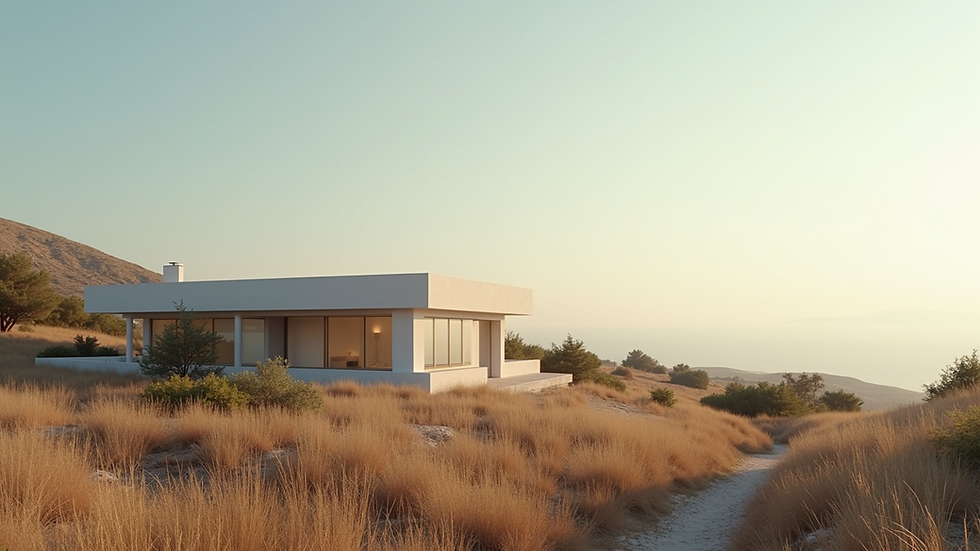Vastu Myths: Exploring the Intersection of Superstition and Science in Architecture
- Rana Pratap

- Jul 22
- 4 min read
Updated: Jul 25
Vastu Shastra has sparked vibrant discussions among architects, interior designers, building owners & developers. This ancient Indian architectural system combines design principles with philosophical beliefs, leading some to dismiss it as mere superstition. However, many advocates argue that Vastu is deeply rooted in scientific concepts that can lead to more harmonious living environments. This article addresses common myths surrounding Vastu Shastra, examining its foundations in both superstition and science.
The Historical Context of Vastu Shastra
Understanding the importance of Vastu Shastra today requires a look at its historical background. Dating back thousands of years, its principles are highlighted in ancient texts like the Rigveda. The term "Vastu" means "dwelling," while "Shastra" translates to "science." This connection emphasizes its focus on creating effective living spaces.
Vastu Shastra emphasizes orientation, spatial arrangement, and energy management. These foundational concepts reflect ancient insights gained from careful observations of nature. Such a historical context not only contributes to its mystical appeal but also to its applicable value in modern architecture.
Common Myths Surrounding Vastu Shastra
1. Vastu Shastra is Purely Superstitious
Many believe that Vastu Shastra is exclusively based on superstition. Critics often claim that its guidelines lack scientific backing and are merely antiquated cultural beliefs. While some practices might stem from folklore, many Vastu principles have scientific underpinnings.
Consider the way a building's orientation affects energy efficiency. Research has demonstrated that structures aligned with cardinal directions can maximize natural light and improve airflow. For example, a study revealed that homes designed to harness sunlight can reduce energy costs by up to 30%. Hence, these principles are not just arbitrary—they can lead to tangible benefits.
2. Vastu is Only About Spirituality
A common misconception is that Vastu Shastra is solely focused on spiritual elements. While it incorporates beliefs related to energy points, Vastu also attends to human comfort. The design of rooms, the placement of windows, and even the choice of colors enhance the connection between individuals and their surroundings.
Scientific studies indicate that the physical environment significantly influences mental health. A well-lit room, aligned with Vastu principles, can improve mood and productivity. Research conducted by the World Green Building Council found that natural light in office spaces can boost employee productivity by 15%, demonstrating the practical applications of Vastu's design elements.

3. Strict Adherence to Vastu Rules is Mandatory
Many individuals assume that strict compliance with Vastu principles is necessary to achieve desired design outcomes. However, Vastu should be considered flexible rather than rigid. Architects can interpret and adapt Vastu guidelines based on individual project needs.
For example, a designer might implement Vastu principles while incorporating modern materials and accommodating urban landscapes. This approach not only respects traditional wisdom but can also result in more functional and visually appealing designs. A unique case is the integration of Vastu principles in the construction of the Gandhi Ashram in Ahmedabad, where modern architecture marries traditional values.
The Synergy of Science and Vastu Shastra
1. Energy Flow and Environment
A key argument for Vastu Shastra's scientific merit lies in concepts of energy flow, reflected in the idea of "Prana." This concept resonates with contemporary architectural practices like biophilic design, which emphasizes a connection to nature.
By incorporating elements such as natural light and greenery, architects can enhance occupant well-being. Research indicates that exposure to natural environments can reduce stress by 60%, revealing the potential impact of design choices grounded in Vastu principles.
2. The Geometry of Space
The mathematical basis of Vastu Shastra also illustrates the interplay between myth and science. Elements like symmetry and proportion not only create visually appealing designs but also facilitate human interaction within spaces.
For instance, a well-proportioned room can minimize noise and improve acoustics, leading to a more pleasant atmosphere. Studies confirm that room layout can enhance communication and collaboration, affirming the real-life applications of Vastu geometry.

3. Future Outlook: A Fusion of Tradition and Modernity
As architecture continues to evolve, so does the integration of Vastu Shastra. Increasingly, modern architects are weaving these ancient principles into innovative designs. This blending of tradition and modernity redefines how we conceptualize spaces in urban environments.
Innovative building systems, sustainable materials, and intelligent designs can align with Vastu principles. This method respects cultural heritage while addressing the challenges of climate change and rapid urbanization. For example, the recent construction of a green building in Bengaluru incorporated Vastu elements while achieving LEED Platinum certification, demonstrating how tradition and sustainability can coexist.
Embracing the Balance Between Belief and Evidence
The myths surrounding Vastu Shastra reflect a significant discussion about the relationship between belief systems and scientific principles in architecture. While some components may appear rooted in superstition, numerous Vastu tenets are substantiated by scientific reasoning and practical applications.
Architects and interior designers can benefit from adopting an open-minded perspective, merging traditional wisdom with modern advancements. Exploring the relevance of this ancient system can lead to living spaces that are not only harmonious but also scientifically valid.
By finding a balance between tradition and innovation, we can appreciate the depth and significance of architecture in our lives.




Comments